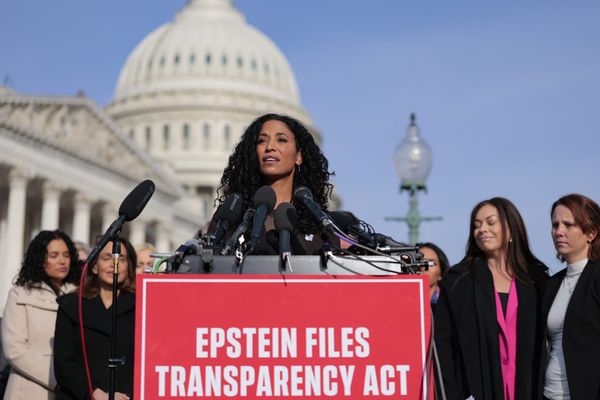If you think advertising is supposed to save your business, you're asking the wrong question.
We've All Been There
A few years ago, a client came to me frustrated:
"We spent $2,000 on ads. Zero results. The freelancer says everything was set up correctly. So... does online advertising even work?"
That conversation sparked dozens more.
And every time, I saw the same issue: people expected advertising to fix a business that didn't yet have a working marketing system.
The Illusion of "Just Setting Up Ads"
Here's what many small businesses do:
• Build a basic website
• Never advertise online before
• Hire someone to "run ads"
• Wait for the magic to happen...
And then? Nothing,
Disappointment. Wasted budget.
The conclusion is almost always the same:
"Advertising doesn't work for us."
But in truth, the problem usually isn't with the ads — it's with everything that surrounds them.
Ads Can't Work Without a System
Yes, poor ad setup exists. But in many cases, l've seen well-targeted, technically sound campaigns fail - because the brand had no marketing infrastructure.
Advertising is just a traffic source. Marketing is what makes that traffic convert.
So if your ads "didn't work," good news:
You now have data.
Now it's time to build the system that will make that traffic valuable.
Start With the Basics
Before blaming the platform or the agency, run this checklist:
• Are you targeting the right location?
• Is the audience specific enough?
• Are conversions tracked correctly?
• Is the message in the creative compelling and clear?
Sounds simple - but I've seen ads for local services running nationwide. Or lead forms sending people to broken links. That's not a marketing failure. That's just a setup issue.
According to WordStream, Google Ads' average CTR is 6.11%, but a great CTR doesn't mean sales if your backend isn't ready.
When Ads Work — But Sales Don't Follow
Clicks are coming. Even some leads. But the cost per sale? Too high. Or worse - zero conversions.
This is where I tell clients:
"It's not a traffic problem. It's a trust problem."
Which brings us to real marketing.
So... What Should You Do Instead?
Let's break it down. These are steps I personally use with clients - and they've made a massive difference.
Step 1: Map the Customer Journey (CJM)
This doesn't need to be fancy — a simple Google Sheet works.
For each stage, ask:
• What do they know already?
• What do they need to see to move forward?
• What will make them trust us?
The CJM framework is standard in marketing and UX - it helps you visualize the entire experience, from first touch to purchase and beyond (Temkin Group, 2022).
I often remind clients: you're not just answering "Will they buy?"
You're answering: "What would make them feel safe enough to buy from you?"
Example of Customer Journey Map ( CJM)

Step 2: Segment Your Audience
Even one product can have multiple audiences.
Example from my own work:
I helped a brand selling wooden toys. When we segmented, here's what we found:
• Moms cared about eco-certifications and hypoallergenic materials.
• Dads? Fast shipping and solid packaging.
Example of segment messaging table
We didn't change the product — we just created different ad creatives and landing pages.
Sales went up 2.5x in two weeks.
This is a classic STP framework: Segmentation → Targeting → Positioning.
Step 3: Align the Offer with What They Value
Sounds obvious, but I see this missed constantly.
Let's say you're promoting speed. But on your landing page, shipping info is buried in small print. That disconnect kills conversions.
HubSpot found that companies with 40+ landing pages generate 12x more leads than those with five or fewer. Why? Because relevance wins.
Step 4: Check for Logic Gaps
Real client story:
They wanted me to promote an in-store discount via Google Ads.
But the website? No mention of the offer.
When I asked to add it - they declined.
"People will just come in if they see the ad."
Spoiler: they didn't.
This is what I call a logic gap — where your user's digital experience and real-world offer don't align. Even if a deal is offline, it must be explained online, because that's where attention was captured.
Step 5: Clarity Beats Cleverness
Another real example: a client accepted Zelle, but the payment page only had a number and a vague note.
No confirmation process. No "What happens next."
Imagine sending money and wondering: Was it received? When will I get my order?
You've just lost trust - and likely the repeat sale.
Ask yourself:
• Is it 100% clear what I'm offering?
• Is the process transparent?
• What happens after a user takes action?
That's not just design. That's trust-building — and trust directly affects conversion.
According to Nielsen's Trust in Advertising report (2022), consistency and transparency across channels significantly increase consumer confidence in brands.
Step 6: Marketing Is a Process - Not a Post
This is something I tell every business owner:
"Marketing isn't a one-time project. It's a loop."
You:
• Build hypotheses
• Run experiments
• Analyze real data
• Adjust
• Repeat
This is how growth actually happens — and why ads "suddenly" start working over time.
As Think with Google puts it:
"Modern customer journeys are non-linear. Marketers must understand how to nudge users at each step of a messy middle."
Beyond the Click: What Happens After?
Here's where many people stop thinking.
The ad did its job. The landing page worked. They clicked.
Now what?
The post-click experience is still marketing.
ASK:
• Do they get a helpful email?
• Do your DMs sound like a real person?
• Is your customer support aligned with your tone?
I once helped a brand triple their repeat sales by changing how their team responded to inquiries. Not the product. Just the tone.
Final Thought: It's Not That Ads Don't Work
If you've ever said:
"Ads don't work for me."
Here's what I suggest reframing it as:
"I haven't built a system where ads can work — yet."
Don't give up.
Start building the system now.
Your future self - and your profit margin — will thank you.
References
• HubSpot. (2023). State of Marketing Report.
• WordStream. (2023). Google Ads Benchmarks.
• Think with Google. (2022). The Messy Middle.
• Temkin Group. (2022). Customer Journey Mapping.
• Nielsen. (2022). Trust in Advertising: A Global Study.







